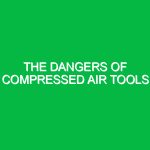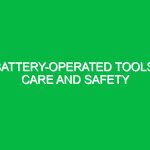Grinding machines are essential tools in various industries, from metal fabrication to woodworking. While they are invaluable for shaping materials and achieving precise finishes, the risks associated with their use cannot be overlooked. Using grinding machines safely is not just a precaution; it is a critical aspect of workplace health, safety, and environmental (HSE) management. Understanding the potential hazards, implementing robust safety measures, and adhering to regulations are paramount to ensuring a secure working environment.
The Importance of Using Grinding Machines Safely
When we talk about using grinding machines safely, we delve into the realm of protecting workers from injuries and creating a sustainable workplace culture. The relevance of HSE in this context is profound. According to the Occupational Safety and Health Administration (OSHA), thousands of injuries occur every year due to improper use of machinery, including grinding machines. The consequences can range from minor injuries to severe accidents that may even result in fatalities.
For instance, I once worked in a manufacturing facility where a colleague sustained a severe injury due to a lack of safety protocols while using a grinding machine. He ignored the protective gear and suffered serious lacerations when the grinding wheel shattered unexpectedly. This incident not only affected him physically but also had a ripple effect on morale and productivity in our workplace. It’s these real-life stories that highlight the significance of safety in the operation of grinding machines.
Identifying Hazards and Risks Associated with Grinding Machines
The first step in using grinding machines safely is understanding the potential hazards they present. Here are some of the primary risks:
1. Mechanical Hazards
The very design of grinding machines poses mechanical hazards. Operators may face injuries from moving parts, including rotating wheels, belts, and pulleys. Accidental contact can lead to amputations or severe lacerations.
2. Flying Debris
Grinding operations often produce sparks and debris. These particles can fly off the workpiece and cause eye injuries or skin burns. Even small fragments can cause significant harm if they strike a worker at high speeds.
3. Noise Exposure
Grinding machines generate high noise levels, which can lead to hearing loss over time if adequate hearing protection is not used. The constant exposure can also contribute to stress and fatigue, which can negatively impact overall performance.
4. Dust and Fumes
Grinding can produce harmful dust and fumes, particularly when working with materials like metals. Inhalation of these particles can cause respiratory issues or other long-term health problems. Moreover, some substances may even be carcinogenic.
5. Vibration
Prolonged use of grinding machines can lead to hand-arm vibration syndrome (HAVS), a condition that affects blood vessels, nerves, and joints. Operators may experience numbness, tingling, and loss of grip strength, which can severely impact their daily activities.
Safety Precautions and Best Practices for Using Grinding Machines
Now that we’ve identified the hazards, let’s explore safety precautions and best practices to mitigate these risks effectively.
1. Personal Protective Equipment (PPE)
Wearing appropriate PPE is crucial. Operators should don safety goggles to protect their eyes from flying debris and sparks. Face shields offer additional protection, especially when grinding materials that produce more sparks. Gloves are another essential component, but they must be chosen carefully; avoid loose-fitting gloves that can get caught in moving parts. Hearing protection, such as earplugs or earmuffs, should be worn to guard against noise exposure.
2. Machine Maintenance
Regular maintenance of grinding machines cannot be overstated. Ensure that grinding wheels are correctly mounted, undamaged, and appropriate for the material being worked on. Inspect the machine’s guards and safety features to guarantee they are functioning as intended. A well-maintained machine is less likely to fail and pose a risk to the operator.
3. Proper Training and Supervision
Operators must receive thorough training on the specific grinding machine they will use. This includes understanding the machine’s components, how to operate it safely, and recognizing potential hazards. Ongoing supervision is also vital, especially for new operators, to ensure safe practices are followed consistently.
4. Work Area Organization
A cluttered workspace can lead to accidents. Keep the grinding area clean and organized. Ensure that tools and materials are stored in designated places, and avoid distractions that can lead to careless mistakes. Adequate lighting is also essential to ensure clear visibility of the workpiece and machine controls.
5. Workpiece Stability
Ensure that the workpiece is securely clamped or held in place before starting the grinding operation. A moving workpiece can lead to loss of control, increasing the risk of injury. Use appropriate fixtures or clamps to stabilize the material being worked on.
6. Grinding Techniques
Operators should be trained in proper grinding techniques. This includes understanding the correct feed rate, maintaining the right angle, and using the machine within its operational limits. Overloading the machine can not only damage the equipment but also increase the risk of accidents.
7. Emergency Procedures
Every workplace should have clear emergency procedures in place. Operators must know how to shut down the machine quickly in case of an emergency. Regular drills can help reinforce these procedures and ensure that everyone knows their role in maintaining safety.
Regulations and Standards Governing Grinding Machine Safety
Several regulations and standards govern the safe use of grinding machines. Adhering to these regulations not only promotes safety but also helps organizations avoid legal liabilities.
1. OSHA Standards
The Occupational Safety and Health Administration (OSHA) has specific standards regarding machine safety. Regulations such as 29 CFR 1910.215 outline requirements for grinding machines, including the necessity for protective guards and safety devices.
2. ANSI Standards
The American National Standards Institute (ANSI) also provides guidelines on grinding machine safety. ANSI B11.9 covers the safety requirements for grinding machines, emphasizing the need for proper training, maintenance, and operational practices.
3. Local Regulations
In addition to federal regulations, local jurisdictions may have specific safety standards. It’s essential for organizations to be familiar with these requirements and ensure compliance to avoid penalties and enhance worker safety.
Conclusion
Using grinding machines safely is not merely a checklist of tasks to complete; it is a commitment to fostering a culture of safety within the workplace. By recognizing hazards, implementing safety precautions, and adhering to regulations, organizations can protect their employees and create a more efficient working environment. Remember, safety is a continuous journey, not a destination. Whether you are a seasoned operator or new to the field, let us prioritize safety in every grinding operation. The well-being of yourself and your colleagues depends on it.


